Weapons and features of Operation True Promise
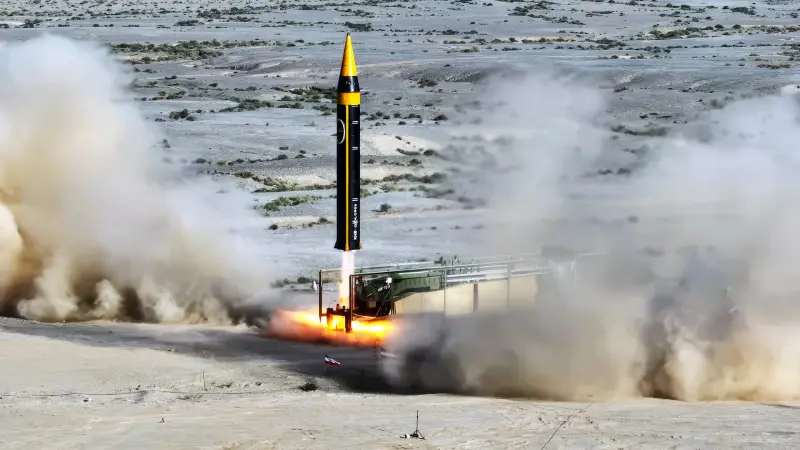
The launch of the Khorramshahr-4 missile during an exercise in the recent past. Photo by Iranian Ministry of Defense
On the night of April 13-14, the aerospace forces of the Iranian Islamic Revolutionary Guard Corps launched a massive attack on Israeli military targets. The operation, called “True Promise,” involved several hundred attack unmanned aerial vehicles and missiles of various classes and types. This operation had a scale unique to the present time, and its technical part is of great interest.
Riposte
On April 1, Israeli armed forces attacked aviation attack on the consular section of the Iranian embassy in Syria. Several employees of the institution and representatives of the IRGC, including two generals, were killed. Tehran promised to respond to this in the harshest possible way. Organizing a military response took about two weeks.
The promised response came on the night of April 13-14. The IRGC Aerospace Forces organized and carried out a massive strike against several Israeli military targets. As a result of this operation, the Iranian leadership announced that its goals had been achieved and also expressed its readiness to repeat strikes if necessary.
Directly during the Iranian strike and after it, various reports, often contradictory, came from various sources, official and unofficial. Various photo and video materials from Iranian and Israeli territory were also published. To date, a sufficient amount of data has accumulated that allows us to take a closer look at the progress of Operation True Promise and note its main features.
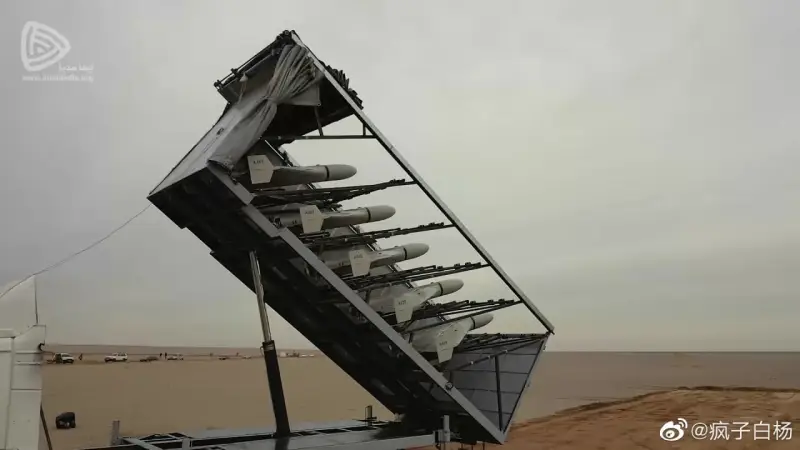
UAV "Shahed-136" on the launcher. Photo Telegram / Dambiev
Wave attack
Iran has still not disclosed the details of the operation. He does not specify the types of weapons used, their quantity and methods of combat use. However, other sources provided the necessary information of this kind. Thus, it is known that to increase efficiency, the massive strike was divided into several parts.
The attack began with the launch drones-kamikaze "Shahed-136" with piston engines. There are reports of the use of Shahed-238 jets, but there is no confirmation of this. According to various sources, about 150-170 UAVs were launched from the western and central regions of Iran.
Then the Pave subsonic ground-based cruise missiles were launched, presumably in the simplest modification. The number of these items is estimated at 30-40 units.
The third wave of launches involved the use of medium-range ballistic missiles, of several types. In officially published materials and in reports from the field, the Imad, Khyber Shekan and various products of the Ghadr family appear. It is also planned to use Rezvan and Dizful missiles. In total, 100-120 ballistic missiles were sent to Israel.
According to some reports, Iran could use Fattah-1 missile systems with hypersonic warheads. The participation of such products in the recent strike is indirectly confirmed by some videos, but more precise information is not available.
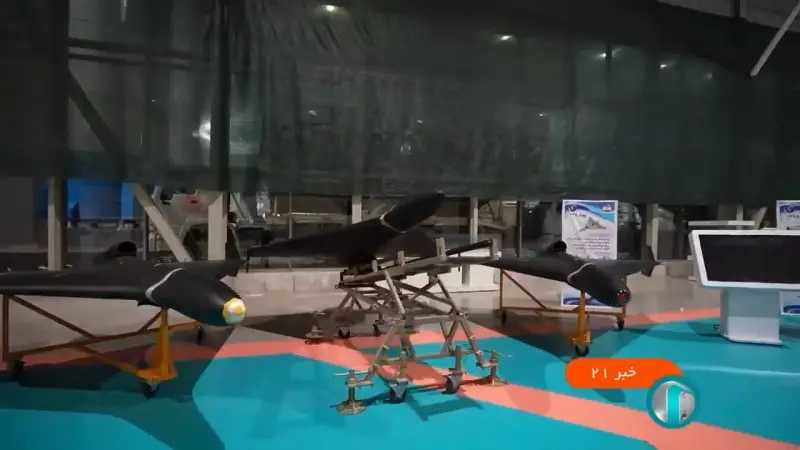
Promising "Shahed-238" in various modifications. Still from Iranian TV report
It is known that, together with the IRGC, other structures attacked Israel. Missile and drone launches have been reported from Yemen, Iraq and Syria. In all cases, it was obvious that armed groups were active, loyal to Iran and supervised by its intelligence services. Iranian-made weapons were used.
Thus, at least 280-330 products of different classes and types were used in the strike. The flight routes ran through countries between Iran and Israel. Israeli army targets were chosen as targets for missiles and UAVs. Interestingly, the IRGC focused its efforts on only a few such targets.
Israel and its allies in the region responded in time to the approaching threat. Anti-aircraft weapons from several countries participated in repelling the attack. The use of ground-based and ship-based air defense systems, as well as fighter aircraft, is reported. Apparently, the layered air defense and missile defense system was operating at its limit.
After the attack was completed, the Israeli side reported the defeat of almost all means of attack. However, it quickly became known that a number of missiles and UAVs were able to break through the defenses and hit the target. Thus, recent satellite images of the Nevatim airbase show five missile hits, damaging aircraft and buildings. An airfield in the Negev desert suffered similar damage.
Results and features
According to the limited available data, no more than a dozen or two Iranian UAVs and missiles broke through to their targets, i.e. only a few percent of the total. Nevertheless, the Iranian leadership reports a successful solution to the objectives of the operation. Such an assessment may be quite adequate - if the “True Promise” was aimed not only at defeating specific targets, but also had other goals.
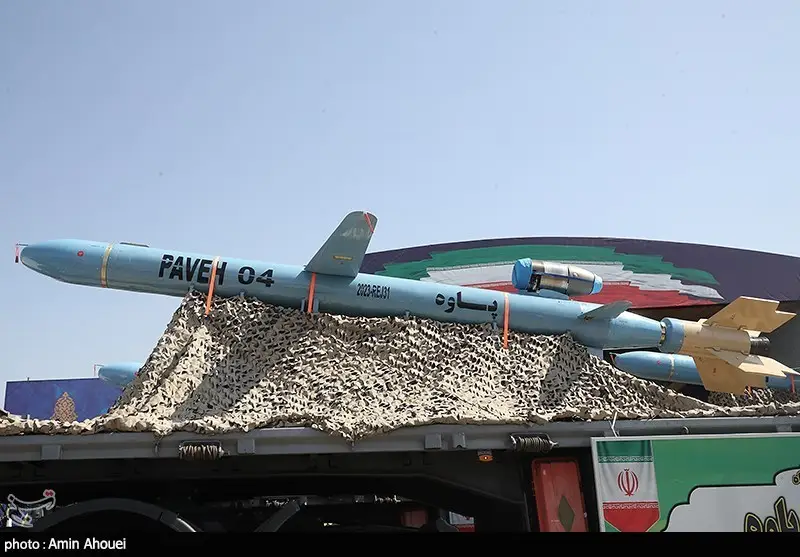
Pave ground-launched cruise missile. Photo: Tasnim News
Note the list of weapons used in the recent strike. Most of the products used were developed quite a long time ago, have been in service for several years or more, and are even exported. The only exceptions are the Pave and Khyber Shekan missiles, which appeared in recent years, as well as the proposed complex with a hypersonic warhead.
Apparently, the IRGC assessed the air defense and missile defense of a potential enemy and decided that the latest model missiles are not required to break through them. At the same time, it became possible to use previously accumulated reserves and reduce operating costs. The percentage of defense breakthroughs and hits seems to be low, but the fact of hitting targets is what matters.
The IRGC ACS competently organized the attack. Various percussive means were used in waves at certain intervals. This made it possible to compensate for differences in the speeds of UAVs, cruise missiles and ballistic missiles, as a result of which they all entered Israeli airspace within the same period of time. Due to this, it was possible to create an increased load on the air defense and missile defense of the Israeli army and allies.
Israel and its allies have reported successfully defeating most of the missiles and drones. However, their air defense and missile defense did not repulse all threats and allowed the destruction of ground targets. In addition, the consumption of anti-aircraft missiles and the percentage of spent ammunition are unknown. Accordingly, it is unclear whether Israeli defenses would have been able to withstand a larger attack.
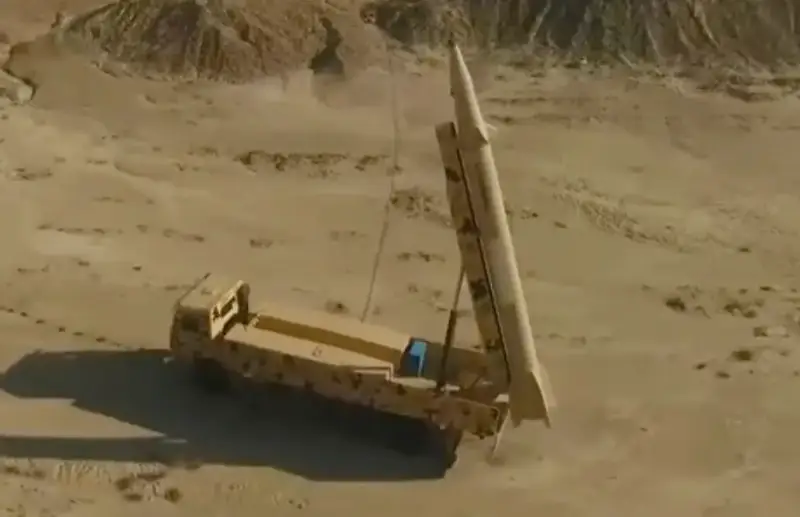
The Khyber Shekan complex during an exercise. Photo by Iranian Ministry of Defense
The main result of Operation True Promise was the demonstration that even outdated weapons, when used on a massive scale and properly organized, can create big problems even for the most modern specialized defense systems. Obviously, changing any of the available variables will seriously affect the outcome of the attack. Iran can use newer missiles that have missile defense penetration capabilities, increase the number of launches, etc. Whether Israel will be able to repel such an attack with acceptable results is a big question.
In addition, Iran tested and assessed the defense systems of a potential enemy. This information can be used to organize future strikes and other operations. At the same time, the presence of such data in the Iranian armed forces should become an additional factor of strategic deterrence - a potential adversary must understand that the IRGC and other structures take into account its problems and weaknesses.
Growing potential
It should be noted that in Operation True Promise, the IRGC aerospace forces used only a portion of the types of weapons they had. A number of other samples were not used. At the same time, we are talking about more advanced and effective complexes that could give different results.
To date, the Iranian defense industry has created, and also brought to series and adoption, a wide range of missile systems of various kinds. Thus, the troops have piston and jet kamikaze drones with a flight range of at least 1,5-2 thousand km and a 50-kg warhead. Attack UAVs carrying one or another weapon are also produced. Unmanned aircraft systems are used as part of land and ship systems. A similar niche is occupied by ground-based cruise missiles, such as Pave or Hoveise. They are intended to hit stationary targets at ranges of up to 1-1,3 thousand km.

Launch of an IRBM during an exercise. Photo Sepahnews.com
Ballistic missiles of all classes, from tactical to intercontinental, are widely represented. In this case, the main attention is paid to medium-range products, because they are the optimal means of attacking the main enemy, Israel. New MRBMs are regularly developed and demonstrated as part of mobile systems. Designs are being improved and characteristics are growing. For example, the Khorramshahr-4 MRBM, presented last year, carries a 1,5-ton warhead and delivers it to a distance of at least 2 thousand km.
The issue of combat units is of great importance. In the recent strike, only conventional warheads, monoblock and cluster, were used. However, Iran is developing its own nuclear weapons, and in the future he will have ready-made ammunition. Installing such products on existing missiles will seriously change the capabilities of the IRGC ACS and create a greater threat to a potential enemy.
Real demo
In recent years, Iran and foreign forces loyal to it have repeatedly carried out attacks on various targets in the region using modern weapons, but these operations were of a limited scale. Now the IRGC AKS carried out a massive strike using several hundred ammunition of different classes.
Under Operation True Promise, the Iranian military demonstrated only a fraction of its capabilities, both quantitatively and qualitatively. In addition, Tehran promised to repeat similar attacks in the event of any measures from Israel, and announced the use of some new weapons. What the next attack might be is unknown, but it is already clear that Iran has serious strike capabilities and is ready to use them to protect its interests.
Information